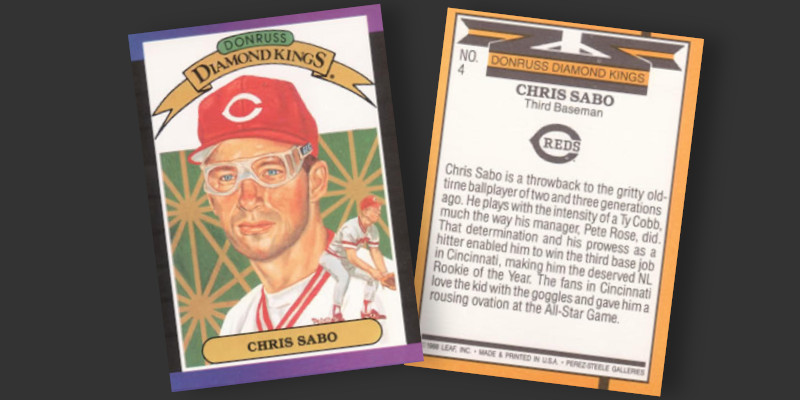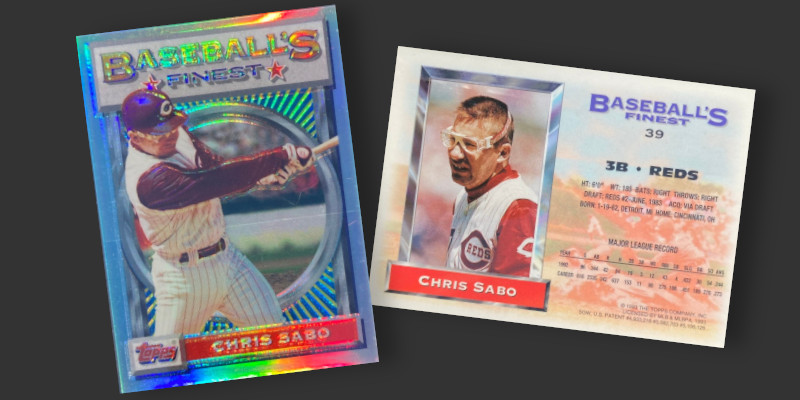The defining trait of Chris Sabo’s appearance was a pair of white Rec Specs, thick-framed glasses designed to withstand heavy impacts and stay in place during games. I remember my friends and I sometimes donning swim goggles to imitate him in our backyard games. I even had the same flat top haircut in third grade. None of us could afford real Rec Specs, so us near-sighted Little Leaguers either played with glasses or simply squinted their way through 9 innings.

Sabo has an interesting story. Like overlooked players such as Wade Boggs and Brian Harper, Sabo was stuck in the minor leagues and didn’t get a taste of the majors until well past his 25th birthday. He made up for lost time, quickly capturing Rookie of the Year honors in 1988. He averaged almost 5 WAR annually in three healthy seasons between 1988 and 1991, establishing his presence as a consistent 20/20 threat even if his vision was anything but. Known for playing all out and trying to win, Sabo became a sort of “what-if-he-wasn’t-a-dishonest-A-Hole” version of local favorite Pete Rose.
Injuries and age (remember, Sabo started his MLB career later than most) began to catch up with him in the 1990s. With more than a decade passing since selecting Sabo as a high ranking draft pick and his age now starting with the number 3, the Reds let their third baseman go in favor of younger prospect Willie Greene. Sabo saw himself as a proven player and took the lack of interest from Cincinnati personally. The result was a series of awkward stints in the American League in which everybody knew he was unhappy. Sabo ended his career by playing a third of a season with the Reds in 1996. The last five years of his MLB tenure were generally uninspiring, but those first few seasons in Cincinnati were big enough to carry the load for his career, giving him an average of more than 3 WAR per 162 games played.

Sabo’s 1993 Finest Refractor attracts a little bit of extra attention among set collectors. The card has one of the lower population counts among those graded by third parties and at one time it received one of the famed short-print asterisks in Beckett Baseball Card Monthly. A review of historical transaction data show no shortage of the card for much of the past two decades.










